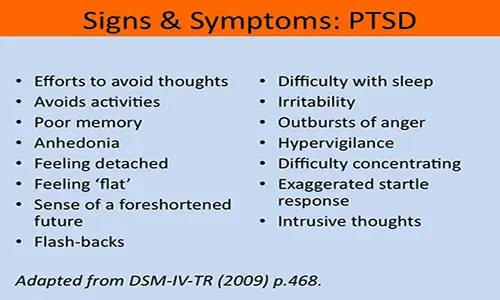1. People with PTSD feel afraid even when there is no looming danger
Naturally, people feel afraid when they sense danger. In a split second, the fear triggers body changes that get them ready for flight or fight. In post-traumatic stress disorder situations, this reaction is damaged or changed. Persons with this condition tend to experience fear or stress even when they are not in danger.
2. 7 to 8% of US Population will have PTSD
An estimated 7 to 8 percent of the US population will at some point have PTSD. Each year, an estimated 5.2 million people have PTSD; this number is only a fraction of all the people who have experienced trauma. Approximately 10% of women experience PTSD in life compared to 4% of men.
3. PTSD develops following a traumatic experience
PTSD occurs after a person experiences a traumatic ordeal that involves threats of physical harm or actual physical harm. In most cases, people who develop PTSD are those who either got hurt, or a person they love got hurt or the person witnessed the harm occurring to their loved one or to a stranger.
4. PTSD came into being as a result of War Veterans
The first time that PSTD came to public attention was in relation to veterans of war despite the fact that it can be caused by various traumatic incidents including rape, mugging, torture, child abuse, train wrecks, kidnappings, captivity, bombings, plane crashes and natural disasters like earthquakes and floods.
5. PTSD Prevalence
About 8 percent of the people, approximately 24.4 million people in the United States have PTSD. This number is equal to the population of the state of Texas. About 70 percent of adults have experienced some form of traumatic event once during their life time. This is equal to about 223.4 million people.
6. Causes of PTSD
There are ongoing studies on genes to establish how the role they play in creating memories of fear. Researchers have pointed out some proteins such as stathmin that and the gastrin-releasing peptide (GRP) that are required to create fear memories. The 5-HRRLPR gene that regulates serotonin levels in the brain seems to fuel fear responses as well. Amygdala, a section of the brain is also said to be active when it comes to acquisition of fear and learning fearful events like touching hot stoves.
7. Children with PTSD have different reaction than Adults
Children and teenagers can experience extreme reactions as a result of trauma than adults, their signs might differ. Very young kids might show symptoms such as bedwetting when they already know how to use toilet, inability to talk or forgetting how to talk, appearing scared even during playtime, and clinging to parent or adult in an unusual way. For older children and teenagers, the symptoms are similar to those of adults. They might also appear to be disrespectful, disruptive and destructive, and experience revengeful thoughts.
8. PTSD Risk Factors
PTSD is a condition that occurs at all ages and every person is at risk of acquiring this condition. However, women are more prone to PTSD compared to men. Some families are more susceptible to this disorder and it runs in the family. Not all persons with PTSD have experienced dangerous events. Some patients contract the condition after a loved one has experienced harm or danger. Unexpected or sudden demise of loved ones can lead to PTSD.
9. Annual Costs
The society of anxiety disorders spends about 42.3 billion dollars as a result of under treatment and misdiagnosis of PTSD. These costs are related to non-psychiatric and psychiatric medical costs, mortality costs, indirect workplace costs and prescription drug costs.
10. Healthcare costs
People who have PTSD have some of the highest rates when it comes to healthcare services. They present a wide range of symptoms, some of which their causes are either misdiagnosed or the connection to past trauma overlooked.











Leave a Reply